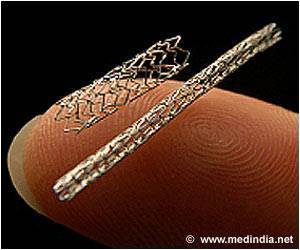The risk of premature acute coronary syndromes in patients with childhood infections increased with more CVD risk factors, finds study.

She continued: "Infectious diseases such as typhoid fever, measles, chicken pox, bronchitis, tuberculosis and dengue fever are common in Indonesian children. We hypothesised that infections experienced in childhood and adolescence might adversely affect the vasculature and initiate atherosclerosis, leading to premature acute coronary syndromes (ACS) or heart attacks."
This was a population-based case-control study of 153 patients with a first ACS before the age of 56 years and 153 age- and sex-matched controls with no history of ACS in Makassar, Indonesia. Severe infection was defined as fever for three days or more, or hospitalisation due to infectious disease.
In Indonesia there is no reliable registry data on infection related hospitalisation and prescription of antibiotics. The researchers used a detailed questionnaire and interviews with patients and controls, plus family members (parents, aunts, uncles, siblings), to obtain information on history of infection during four periods of early life: infancy and pre-school (0-5 years), elementary school (6-13 years), junior high school (14-17 years), and senior high school (18-21 years). Interviewees were asked to verify the information with other family members if they were in doubt. The researchers used the information to calculate an infection score ranging from 0 to 4. Positive early-life infection was defined as a score of 2 or more.
Information about traditional CVD risk factors was obtained using an interviewed-questionnaire and diagnostic test results in cases and contemporary tests in controls. Data was recorded on age, sex, occupation, monthly income, educational level, dietary pattern, physical activity, smoking status, family history of heart disease, diabetes, sudden cardiac death, and known history of hypertension and diabetes.
Study participants were 47 years old on average (range 28-55 years) and 81.7% were male. In crude analysis, infection experienced in childhood and adolescence was associated with a three-fold higher occurrence of premature ACS later in life.
The researchers investigated whether early life infection modifies the effect of traditional risk factors on developing early CVD. The Framingham risk score (FRS) was used to rank all participants as low, intermediate or high risk based on age, gender, total and HDL cholesterol, smoking status, diabetes, blood pressure and use of blood pressure medications. There was an indication for interaction between childhood infection and CVD risk factors (p=0.052). "This suggests that infection in childhood may potentiate the impact of traditional risk factors on premature ACS," said Dr Qanitha.
She concluded: "Our findings may apply to other countries in South-East Asia where infectious disease is still prevalent. Here governments and policymakers should have a combined strategy for tackling infectious disease and cardiovascular disease. Early-life infection may be a relatively unknown contributing factor in ACS occurrence."
Source-Eurekalert
 MEDINDIA
MEDINDIA



 Email
Email








